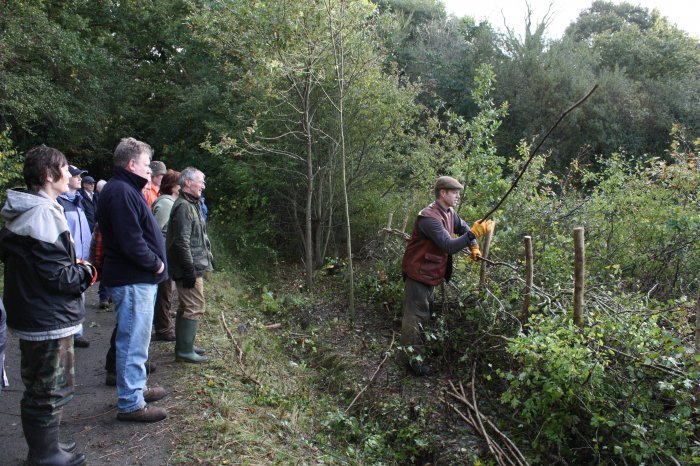A newly-constituted team of volunteers came together in November 2013 to learn some of the finer skills involved in laying traditional hedges. Thanks to the Veolia Pitsea Marshes Trust, a one-day course of tuition was arranged by Jim Wallden, an experienced hedge-layer.
Applying these skills, by the end of February 2014 a major section of the hedge alongside Green Lane had been laid, opening up a vista across the pastures towards the heights of Langdon Hills.Moreover, a different section of hedge was laid near Langdon Lake, at Dunton, by a team led by Lucy Sawyer-Boyd.
This work achieves a great deal. Quite apart from the pleasing visual aspect, and the feeling that the landscape is being properly cared for, there are other benefits. The creation of low, dense hedges creates many more spaces in which small songbirds can nest, as well as the cover needed by a wide variety of invertebrates. Perhaps surprisingly, it also enables the bushes to thrive in the long-term: if hedges become outgrown, a considerable proportion of the bushes die amid the competition, eventually producing a gap-ridden assembly of linear trees, with very little growing underneath.
What’s more, hedge-laying is first-rate exercise, undertaken in the fresh air amid stimulating company. Further hedge-laying is planned for next winter. We need more volunteers. If you wish to get involved, let us know.



